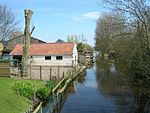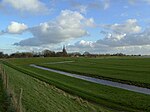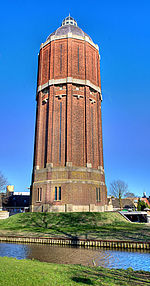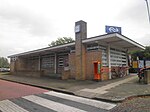Pilot Polder Andijk
1927 establishments in the NetherlandsCoastal constructionEnvironmental soil scienceFreshwater ecologyLand reclamation ... and 3 more
MedemblikPolders of North HollandZuiderzee Works

The pilot Polder Andijk, or Test Polder Andijk, Proefpolder Andijk in Dutch, is a polder established in 1926 - 1927 in the Zuiderzee near the village of Andijk. The aim of this prototype is to study the embankments and agriculture for future polders in the Zuiderzee Works. In 1929, the pilot polder was inaugurated by Queen Wilhelmina of the Netherlands.
Excerpt from the Wikipedia article Pilot Polder Andijk (License: CC BY-SA 3.0, Authors, Images).Pilot Polder Andijk
Waterkeringpad, Medemblik
Geographical coordinates (GPS) Address Nearby Places Show on map
Geographical coordinates (GPS)
| Latitude | Longitude |
|---|---|
| N 52.751388888889 ° | E 5.1952777777778 ° |
Address
Waterkeringpad
1619 JE Medemblik
North Holland, Netherlands
Open on Google Maps








